The Final Portrait (part 2)
Howard Hughes, a femme fatale, and a billion dollar painting at a house of ill repute
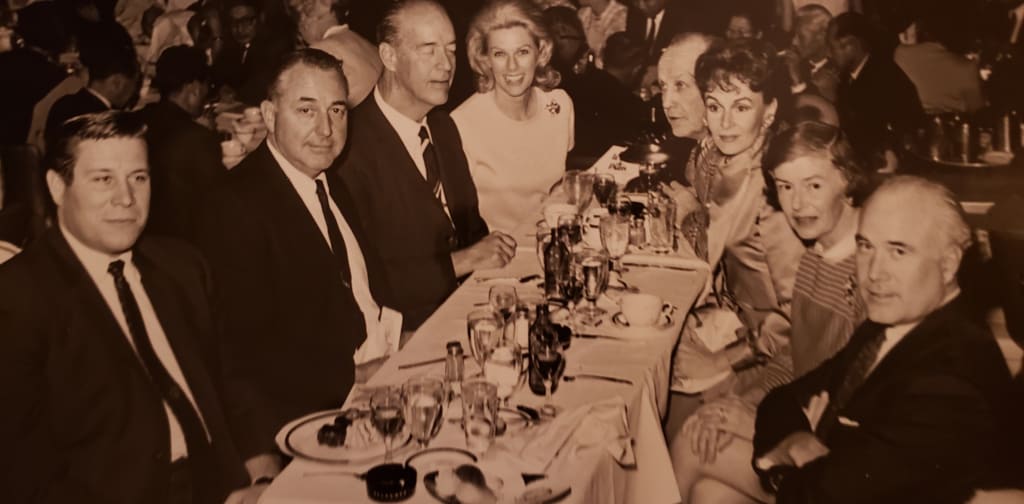
A True Las Vegas story, told in episodes.
Part 2: The Ghost and the Midnight Special
"I knew Bob Deiro years ago."
Paulina had been in Las Vegas for 25 years when she was introduced to me by the Governor's Chief of Protocol, in 2004. By the time we were driving to meet the Count that morning in 2012, we had seen about two dozen countries together. The granddaughter of a globe-trotting Chilean Trade Ambassador, Paulina had been the Honorary Consul of Chile in Las Vegas since 2002, and the Las Vegas symbol of South American Elegance, even longer.
"I used to buy from his estate auctions. Especially antiques." Paulina had become an interior designer in the Las Vegas in the early 1980's. She retired from the business after selling her firm in 2002, but continuing to design just about everything, everywhere she went. She lit up as we headed to the Villa Kismet. "I had no idea he holds the rank of Count." I could hear the fascination in her voice.
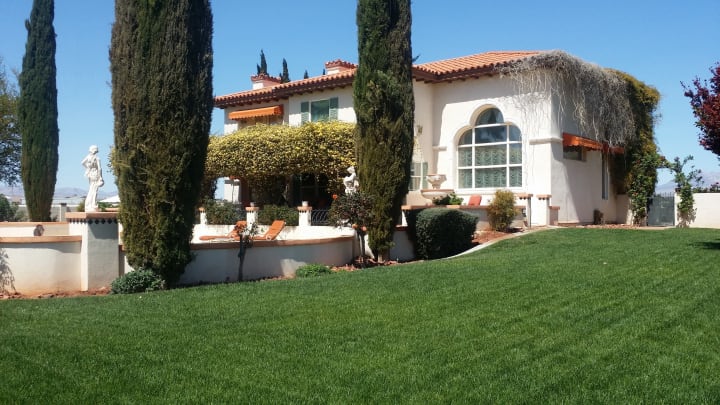
"His father was also Count Deiro," I explained, "He made the piano accordion a popular instrument in Vaudeville, before World War I, and toured the US." We pulled up to an Italian Villa on the edge of the ancient Gilcrease Orchard, at the northwest edge of Las Vegas. Villa Kismet, named for the earlier Count Deiro's most successful album "Kismet," sat alone amid the rows of fruit trees and vegetables, with nothing impeding the surrounding mountain views. We pulled the cord to ring the actual hanging brass bell, in a tower above the door.
Perfectly coiffed white hair and sky-blue eyes capped the big smile and affable welcome of Count Deiro. He brought us in like old friends, walking through various family artifacts to his salon, where a casual table was set near the kitchen, and Countess Joan was preparing a summer salad. Casually dressed but with attention to every detail, the Count had a limp, but remained stout and appeared in great shape otherwise. He was in his element, and spoke easily with great candor. He listened intently, was humble and possessed a self-deprecating humor honed by many years of society interaction, in the US and Europe. He often checked dates and names with the Countess, his wife of many years, "Joanie." She was always smiling and I could still see why he said she was a ringer for Liz Taylor. We settled into our chairs around the table, I poured the wine, and the conversation moved toward the reason for the gathering.
The primary assertion by the winning side, in the trial surrounding the Last Will and Testament of Howard Hughes, was that the reclusive billionaire had been holed up in the Desert Inn Hotel, from his arrival on Thanksgiving eve, 1966, until his departure, four years later to the day. The lynchpin of the winning estate was the claim that the man had never left the hotel in those years. This would have made it impossible for him to have been anywhere else, and thus unable to have met the would-be beneficiary of the mysteriously-appeared will. This story was propagated by the Hughes companies, which then operated from the Desert Inn. But it wasn't for those particular entities that Bob Deiro had worked. He had been an employee of Hughes Tool, in Texas, not the Nevada subsidiaries. It was a different chain of command.
"Nonsense," Deiro flatly stated, the smile running from his face, "I know he left Desert Inn, because I flew him myself, about a half dozen times, in '67." I asked him about Hughes's high profile representative, Robert Maheu, and his assertions conflicting with the Count's. He chuckled, "As I reminded Maheu, he didn't even know Hughes left the hotel in 1970, until he had been gone for a week. Why would he know he left in 1967? He never even met Hughes." Deiro went on to say his history with the Hughes organization was well documented and several co-workers had verified his account, including the secretary Hughes Tool had hired to work for him.
Over the next hour, he related the entire story, including much he hadn't bothered to impart to the press. The Count had a keen perception of the fact that the truth is far stranger than fiction, and in Las Vegas perhaps more so than anywhere else in the world. Whole truth be told, few could believe it.
Prior to his time with Hughes, Deiro was a private detective in Seattle and then San Francisco. He downplayed that occupation as little more than surveillance of cheating husbands and chasing down missing trust fund brats, who had disappeared into the Haight Ashbury 'tuned out' culture of the time. Less public - and left off of the resume he provided Hughes - was the fact that when Bob had later taken up residency at the Skyrider Inn at the North Las Vegas Airport, the "air charter business," he ran there had consisted primarily of running the "Midnight Special." Flying customers to Nevada brothels, legal in the rural counties to the north, was a substantial part of Deiro's income at the time. Taking off from the North Las Vegas terminal, his 'party plane' of three or four passengers would head to Ash Meadows Brothel. He would radio the house, or buzz it at low altitude if no one answered. On the ground they'd line up the headlights of a pickup truck to illuminate the runway.
Deiro had already been running the night flights from the North Las Vegas air terminal where he rented planes and his motel room apartment, when Hughes decided to buy the whole facility. Bob said he didn't expect them to keep him around, once the billionaire's security man had investigated his background. But to his surprise, they seemed to like his mix of legitimate piloting capability, in concert with the skill set brought about in grey area operations like the Midnight Special and PI work.
"We came to Vegas when my mother took up with Sam "Baby Shoes" Prezant. He taught me to deal casino games, along with guys like 'ice pick' Willie Alderman. But the Hughes people seemed to feel my dodgy history was an asset, albeit one to shut up about," Bob explained. He didn't talk much about his youth.
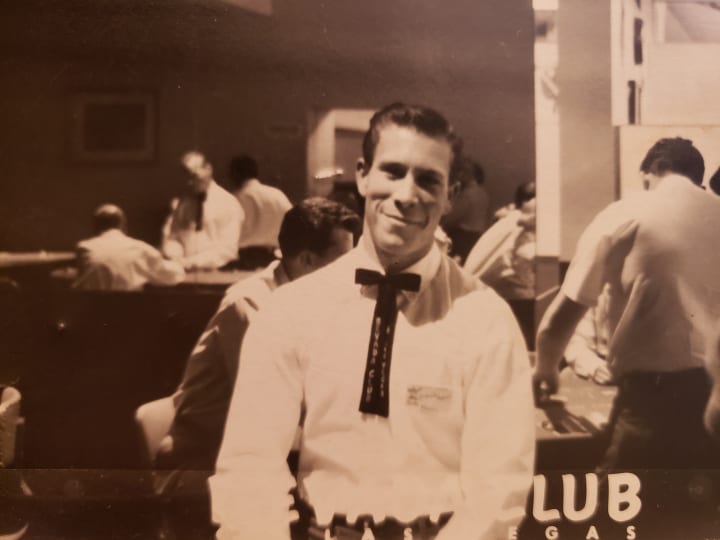
He said Hughes had him fly filmed approaches to various sites that were under consideration for Hughes's much-lauded SST - the Super Sonic Terminal, a massive planned next-generation airport which Howard Hughes had envisioned to serve the entire western US. County officials were fawning over the man at the time, and conservative journalists jubilantly pictured a changed Las Vegas, with hotel towers converting to offices, serving a military industrial complex which would wipe clean and forgive the former sins of the City.
The first time Bob Deiro flew with Howard, it was to chart approaches on Mormon Mesa, a potential SST site, at night. It seemed the mastermind of the project had tired of watching the action from his hotel room, so he arranged to fly with Deiro. Bob described the experiences as a far cry from anything like pilot camaraderie. It was nothing but the business at hand. Hughes insisted on taking the controls to buzz the desert floor in precarious night flight approaches. Deiro was keenly aware that his boss had crashed more planes than the public knew, and was not comforted by Hughes's demanding orders to skip the safety checks on takeoff. But after several passes just above the creosote and coyotes, he settled into the realization that the record-setting flyer was indeed a skilled, natural pilot.
One night in the fall of 1967, the Desert Inn Hughes staff called Deiro and told him to ready the plane for the regular passenger. He was not given any coordinates and there was no reference to any of the flight plans he regularly submitted to survey SST sites. The same sedans delivered Hughes in his usual state of disheveledness, a few weeks overdue in the hygiene department.
In the plane, Bob awaited orders. "Ash Meadows." Hughes directed. Hughes knew his airport manager was familiar with the flight Bob had called the "Midnight Special." Deiro quickly plotted the course and took to the air, heading south around Mount Charleston to find the tiny lights of "The Annex," as the legal brothel at Ash Meadows was called in those days. Deiro recalled taking Hughes to Ash Meadows twice, before he was re-directed to the Cottontail Ranch, a new brothel just off Interstate 95 North at Lida Junction, 150 miles from Las Vegas. An additional two trips would be flown the the new location.
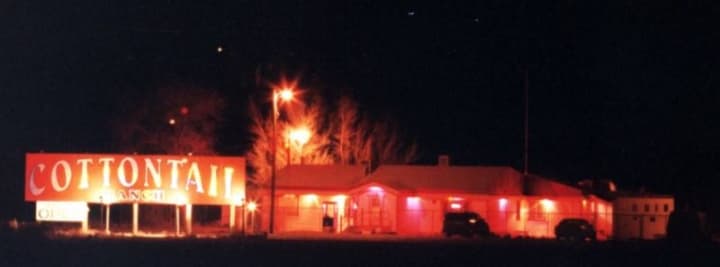
Hughes found his favorite, "Sunny," once again, and disappeared with her. And that was where, in December of 1967, the Count had lost the Billionaire.
"Did you find Sunny?" The Count asked me plainly, as we poured a third round of Chilean carmenere. I related in detail the story of the lead I had, but that I couldn't be sure if the woman I knew of was in fact the mysterious lady of the evening. The Count told me he would put me in touch with Gary Magensen, the former FBI agent looking for her, and see if he could find the woman that Ramona had remembered. Deiro recalled Sunny quite well. "She was tall, slender, auburn hair and deep set eyes. I had seen her before. I knew she had worked in Hollywood. She was the class of the field - could have held her own against movie starlets of the day. She had a diamond in her upper incisor, which was pretty much unheard of in those days."
The Count explained to me that Magnesen had just finished his second book on the subject of the Hughes Will, Stolen Justice. He said the old investigator was still trying to find or identify Sunny, and that a couple of reporters had traveled to the Cottontail Ranch, doing a story on the bordello, after it's 2004 closure. The reporters met a caretaker there who worked for the late Madam, Beverly Harrell. Her widower, Howard Harrell, still owned the place then. The caretaker had shown the Utah reporters a nude portrait on the wall, explaining, "That's Sunny. She was Howard Hughes's favorite."
Not long after the press visit, Howard Harrell had shuttered the Cottontail completely, and the remaining artifacts had been sent to him in rural northern Nevada, before he passed away in 2008. Howard Harrell had corroborated the Hughes story to Gary Magnesen, and emailed him a photo of the painting, then in the widower's possession, along with several other Cottontail Ranch artifacts. Gary had included a black-and-white of the photographed painting in Stolen Justice.
Deiro printed a copy of the photo of the portrait from his office, and handed it to me. I found the painted image of this mystery woman haunting. How fascinating that so much had come down to this unknown woman. Whoever Sunny was, if she were to be found, she could confirm the Howard Hughes story tied to Dummar, overturning the accepted narrative which had discredited the billion-dollar will. Gary Magnesen had grown so convinced that Dummar was right, he helped Melvin bring a new case against the Hughes companies in 2006. The judge had thrown it out as having all been tried well enough in 1976, absent presentation of any substantial evidence not known during the original trial.
The photo of the painting was striking. I had not expected the work to be of any real artistic quality. But the Count and I agreed that even the small, colorless photo of the original work showed real talent in the original artist. I realized the Count was well versed in the world of art. Materials, brush stroke technique, position of the subject - nothing went unnoticed by Deiro.
We grew even more curious as we discussed the piece. The painter had quite clearly signed it, "Henri Shein '68." Magnesen had already chased that lead, which went nowhere. The notion that there would be no other works by a signing artist of obvious talent seemed odd to all of us, but there was just nothing, artistic or otherwise, tied to any reasonable variation of the name. Not lost on the Count or me was the irony that this artist, anonymous though named, was a singular linchpin tying together the story. The obviously valuable witness, who could corroborate the existence of Sunny, was yet another bewildering mystery.
Equally frustrating was the fact that each missing piece seemed almost too convenient, as if perfectly placed to discredit the entire account. The press was not entirely convinced of Deiro's story. They could punch no holes in it, other than those potential gaps that we ourselves were trying to bridge. Sunny, then, became all-important. Was Ramona's old neighbor the long lost liaison? With the Count's introduction of Gary Magnesen, we would soon know.
The former Organized Crime Program Coordinator of the FBI in Las Vegas was as plodding an investigator as I would have imagined. A few weeks after my visit to Villa Kismet, Magnesen and I were recounting the salient points as he drove us toward one of the oldest, roughest neighborhoods in Las Vegas. Ramona's last recollections and directions gave us a starting point.
As methodical as his books had indicated, former Agent Magnesen and I went address by address, as he matter-of-factly interviewed anyone in the area who might have information on the unique character we sought. Gradually we found that Ramona's old neighbor had moved to another part of town. Gary got a phone number, no answer. A week or so later, he found the address. The woman had passed away, but Magnesen interviewed her widower, and in doing so, eliminated the woman as possibly being the long lost brothel girl. The ethnicity, height, age and easily verifiable historical whereabouts did not match up. Ramona's old neighbor was not Sunny.
I chalked it up as an amusing Saturday and an interesting story of a dead end, at the end of a streak of dead ends. I figured we would never know more about the lost muse of Howard Hughes.
Meanwhile, the Count and Countess had begun socializing with Paulina and me. We had a great time together as they were our guests at Cocktails with the Consuls, a bi-annual party I hosted at the former residence of Michael Jackson, in 2013. We visited Villa Kismet several times over the next few years. I got to know G. Roberto Deiro and his beloved Joanie, quite well. Then in 2016 he called with interesting news.
The Cottontail Ranch had been sold, some time after the death of Howard Harrell, to a new owner who had purchased most of the available land and water rights in the surrounding county as well. The buyer was an old client of Count Deiro in his auction business. She had bought much from many Deiro auctions over the years. With the purchase of the Cottontail, she also received its remaining artifacts. Among these was the painting of Sunny.
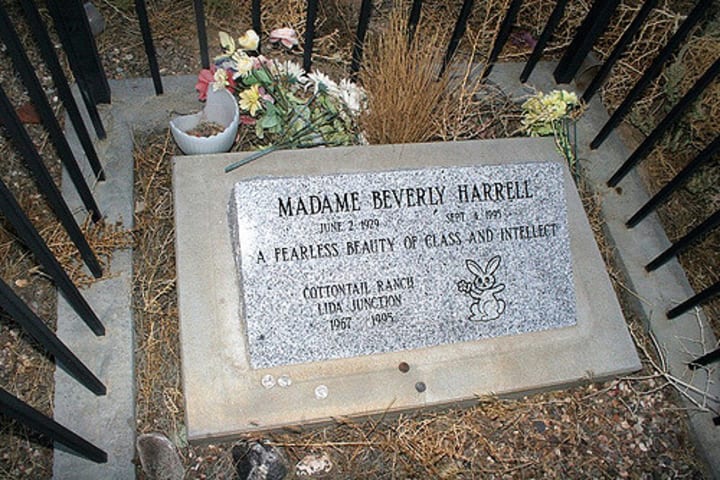
"She told me that since I'm the last one standing from those days, I should have the artifacts and could do what I want with the Cottontail Ranch name," Count Deiro told me at a gathering. He said the new owner was wiping the remaining ruins of the old bordello off the property.
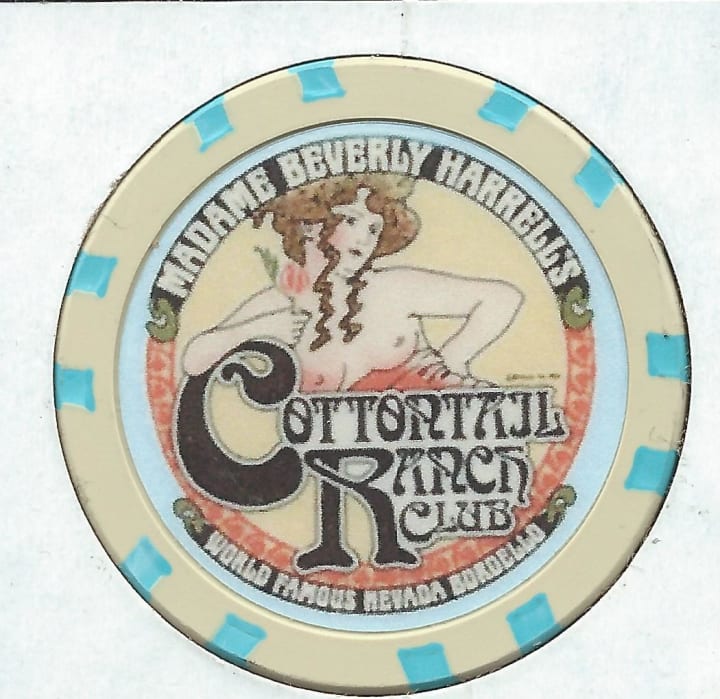
"I have Sunny. I have the painting." The Count was mildly amused and expecting the same from me. But I was beyond intrigued and wanted to lay eyes on this original as soon as possible. My enthusiasm must have been contagious. Bob told me to come over the following weekend. I promised to bring the Chilean wine again. "I haven't even had a chance to take a look at her yet myself," he said.
Back at Villa Kismet, Deiro limped off to the garage and returned with a framed object, covered in cloth. I helped him prop it up in a nearby chair. Paulina, Joanie and Bob gathered around as I pulled off the cover, revealing Sunny, in all her glory.
Still in the original carved wooden frame, oil on canvas, about four feet tall. She was nude, tastefully posed in a seated position, with her right side toward the artist. She looked over her right shoulder, with her right hand curled lightly supporting her chin. Her auburn hair is pulled up in the style of the late 1960's. The brush strokes were nimble, simple, at ease. The colors deep. But it was her eyes the caught us all by surprise. At once sadness, intrigue, promise, fear.
Captivating.
The Count mentioned that there was one other painting, of the Madam, Beverly Harrell. He retrieved it likewise, but it was unimpressive. Not signed, obviously a different artist, very amateurish. It too was an oil on canvas, but using different materials and smaller in size. The portrait itself was a terrible likeness which apparently tried too hard to improve upon its subject. It wasn't in the same universe as the painting of Sunny. I could scarcely imagine them hanging in the same room. Deiro felt it was Beverly trying to flatter herself. We found ourselves quickly returning it to the storage.
Then we returned to the painting of Sunny.
"That's no amateur artist." I said. Everyone was a little quiet, studying. We were all dumbfounded that the portrait's painter was as much a mystery as his subject. Who were these people? How did they come to be wrapped up in the labyrinthine social universe of Howard Hughes, at his most reclusive time? How is it possible that no one else could know Sunny? What artist paints such a piece without having produced a similar portfolio? Why did Beverly Harrell, the Madam who owned the Cottontail Ranch, have such a superior painting of one of her girls on the wall, when her own ego portrait was nowhere near this caliber?
I took a few photos of the painting as we discussed its origin. The Count became quiet. The affable smile ran away from his face as he seemed to lock eyes with the image. He had me bring it to him, seated at the table, for a closer look. Paulina and Joan began conversing in the adjoining room, as the Count studied the piece. I took a photo of the two.
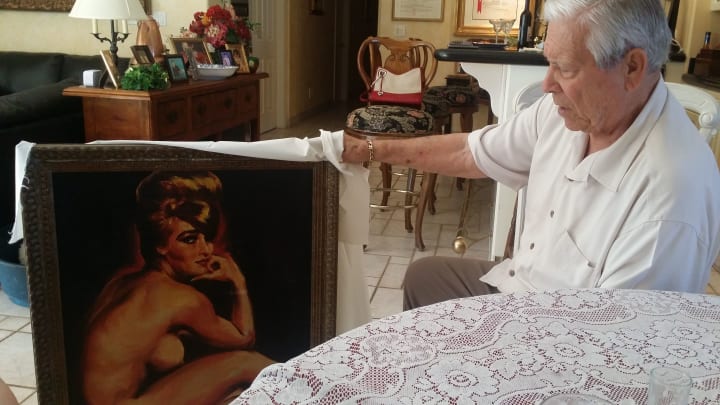
He became serious, staring at the painting, then me. "Art is like a woman - always so much more than she appears at first blush." Was he just trying to be mysterious? He told me he wanted to hang the piece in his office. I suggested his wine cellar. There was a perfect wall, and I wanted to make sure she stayed protected. He agreed, and I got his tools and placed Sunny in that ideal location as Deiro shouted down instructions from the top of the stairs, too difficult for him to traverse-unless there was a party downstairs.
Back in the Salon, the Count went on to tell me in a softer, reflective tone, that his passion for art went far beyond the paintings, carvings and etchings in his home. He brought out a huge coffee table book called "Spiral Jetty". The topic was a massive work of landscape art by the same name, created in 1970, by Robert Smithson. Spiral Jetty is a 1,500-foot spiral-shaped jetty constructed by Smithson on Great Salt Lake, Utah.
He brought out another book called "Double Negative". This was a similar elaborate photo album chronicling the creation of another massive work of land art by the same name, created by artist Michael Heizer in 1969, at the very remote Mormon Mesa, the very same location which he had surveyed from the air with Hughes a few years earlier.
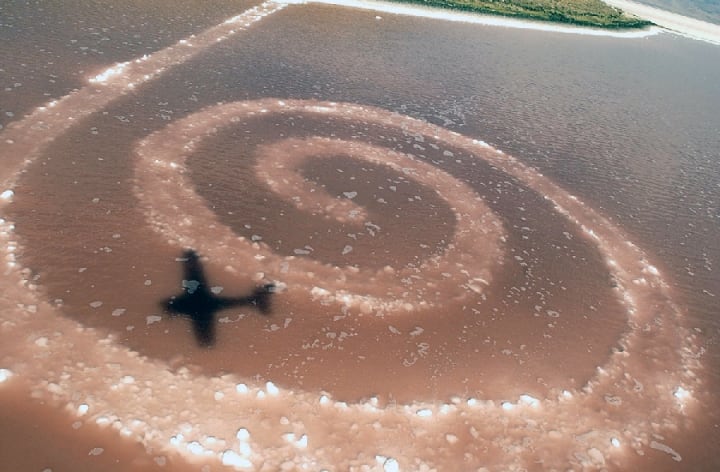
These works were vaguely known to me. I had heard of them, recognized as harbingers of other works of land art, years later.
The Count reminded me that City, the largest of them all, was yet another work by Heizer, still being constructed at a little-known, vast location in the remote Nevada desert. I reflected on the fact that it had been under construction for decades. Deiro said Heizer was notorious for keeping others away from City, and told me this was possible because unlike many such large works, the artist had purchased the land on which it existed, early on. I was surprised I hadn't thought about this fact earlier.
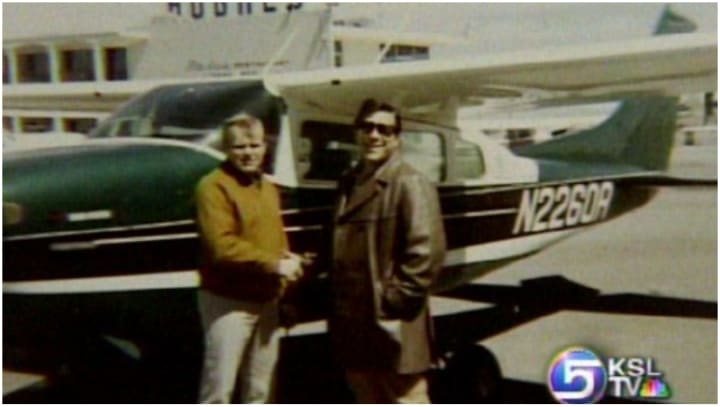
Then Count Deiro dropped another gem. "I suggested it to him," he said. more conversation and a few articles later revealed that Bob had befriended Heizer and Smithson when they were chartering planes in the late 1960's to look for locations - canvases, really. He was hooked on land art by 1970. He had suggested the methodology of purchasing the subject land parcels, which was a departure from the norm.
He had also suggested many locations, several of which were utilized by the artists. One of these was City. Another was Double Negative, which was constructed on the same land where Deiro had skimmed the creosote bushes at breakneck midnight speeds with Howard Hughes, just a few years earlier, studying potential sites for the SST. He scouted others with artist Walter de Maria, including for his famed Lightning Field, which was eventually completed in New Mexico. I was amazed that he knew these famous artists, but it made sense given his official affiliation helping to find the location recently for Hugo Rondinone's Seven Magic Mountains land art, located just south of Las Vegas.
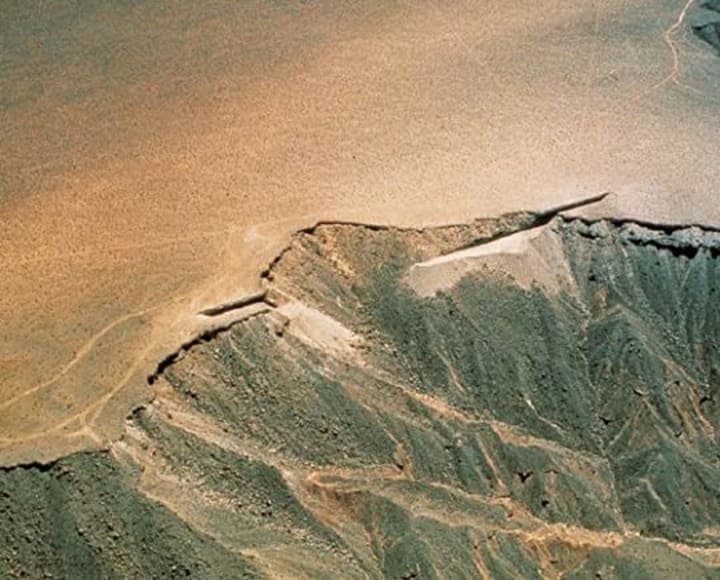
Wondering aloud what the elusive Michael Heizer was like, the Count explained that he liked him very much, but that when Deiro had donated papers from his time working with Heizer and others to Special Collections at the University of Nevada in Reno, he had accidentally offended his old friend, who was furious, and would have nothing more to do with him. He said that hurt far more than the fact that the artists tended not to name him in recounting developments of their sites, though others had.
"I learned a great deal, however," he said. Then his face dropped into a serious expression, as he made sure to lock eyes with me to drive it home when he repeated, "Never what they seem at first blush."
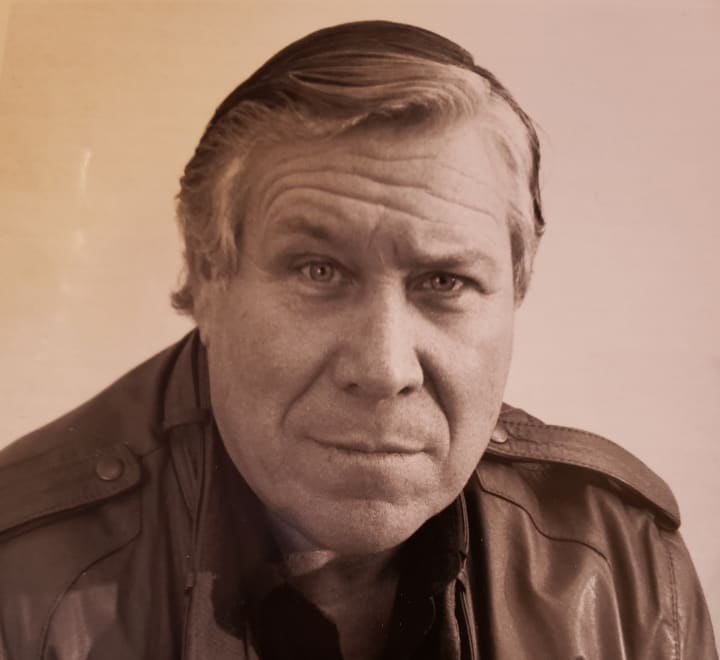
Over the next couple of years we communicated from time to time, and enjoyed each other's company at a few events, including his 80th birthday party. It was full of old mobsters, bankers, musicians and other Las Vegas characters, as well as some family members. He sent me a few emails with some attachments, and told me they were for whenever I could get to them.
A short time before his 81st birthday, Count Deiro called out to his wife at home, one last time. He had suffered a major stroke, and was gone in an instant. We were all devastated.
Joan explained the strictest of instructions, left by the Count. Body cremated after any parts could be donated. No funeral. No celebration. No gathering. He had been adamant. There was to be no deviation. He had meant it, and had made her swear to comply. Though I had probably imagined the eulogy I would give in his honor a dozen times, I reluctantly agreed to oblige.
Bob had left me dumbfounded. This larger than life, jubilant storyteller, this life of every party, insisted on no party at all, in the end. No one would have guessed it. The instructions seemed anathema to his very being.
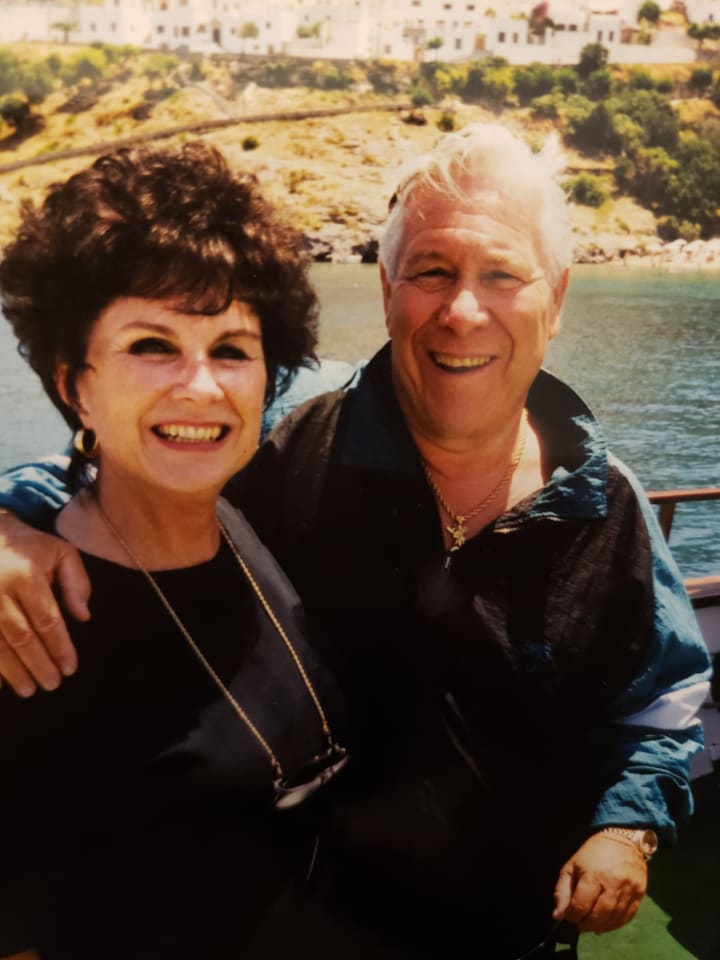
Joan organized her life over the next several months, then asked us over to Villa Kismet one afternoon. "He would have wanted you to have her," she said. The painting of Sunny was waiting for me. Paulina and I brought her home, overwhelmingly saddened. Then I remembered the last emails from Bob. As I searched for them, I was surprised to realize that over a year had passed. I read them and the attachments. They detailed the Count's life with Hughes and with the artists. No tremendous revelations, but wonderful details, and very much in a voice I knew was meant for me personally.
I sat contemplating for what seemed like hours, staring at Sunny, remembering, "...never what they seem at first blush." I went to his last letter to me, to the last line: "Art is forever, and immutable. Life is temporary and transient."
I stared at Sunny, seeking to solve the mystery of her gaze. I had a revelation, flipped open my laptop and did a quick search. Then I jumped from my chair and went to find Paulina.
"What is it, Consul Warren?" she smiled.
"I know who painted Sunny. I found the artist. I know who has claim to the image."
"Anyone you can contact?" She replied.
"They will never admit she's theirs." I said. "Sit down, you won't believe how obvious it is."
About the Creator
Jonathan Warren
Honorary Consul of Monaco, Chairman of the Liberace Foundation for the Performing and Creative Arts, 50 years in Vegas, Citizen of the world.
www.jonathanwarren.me
Enjoyed the story? Support the Creator.
Subscribe for free to receive all their stories in your feed. You could also become a paid subscriber, letting them know you appreciate their work.

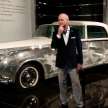
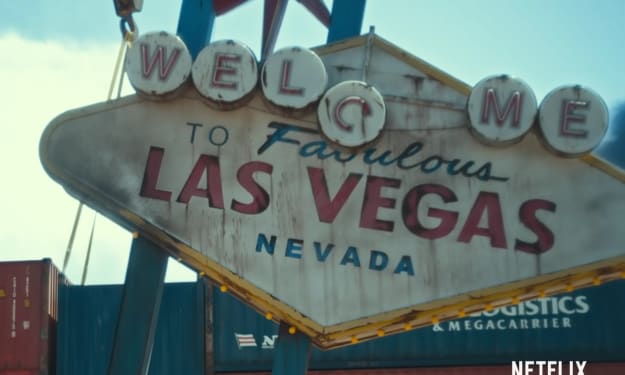

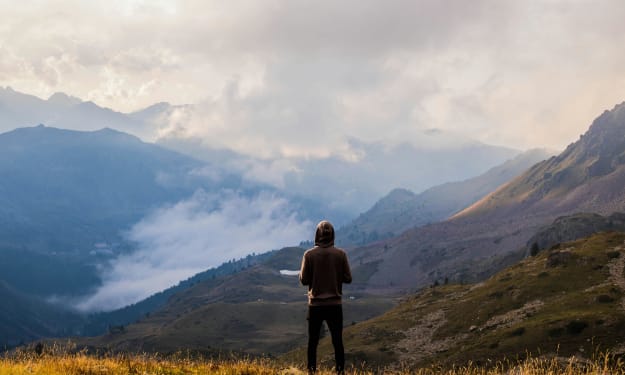
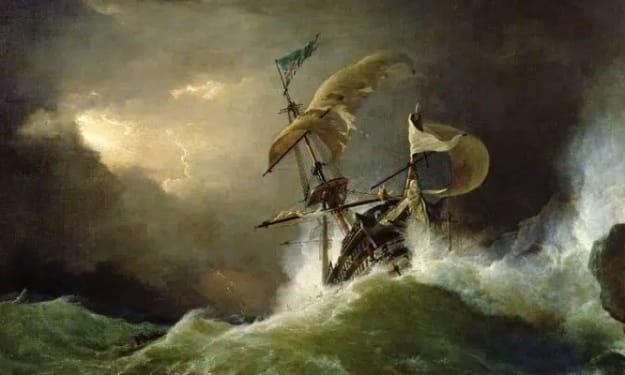
Comments
There are no comments for this story
Be the first to respond and start the conversation.